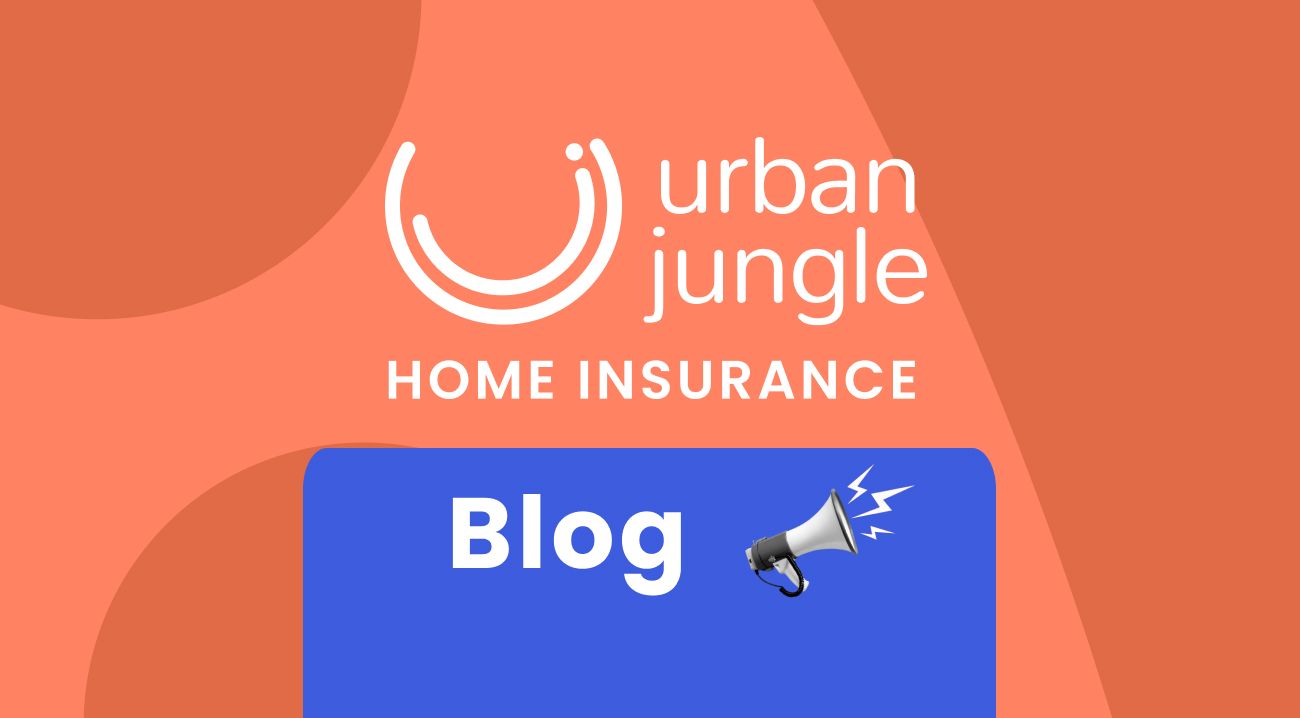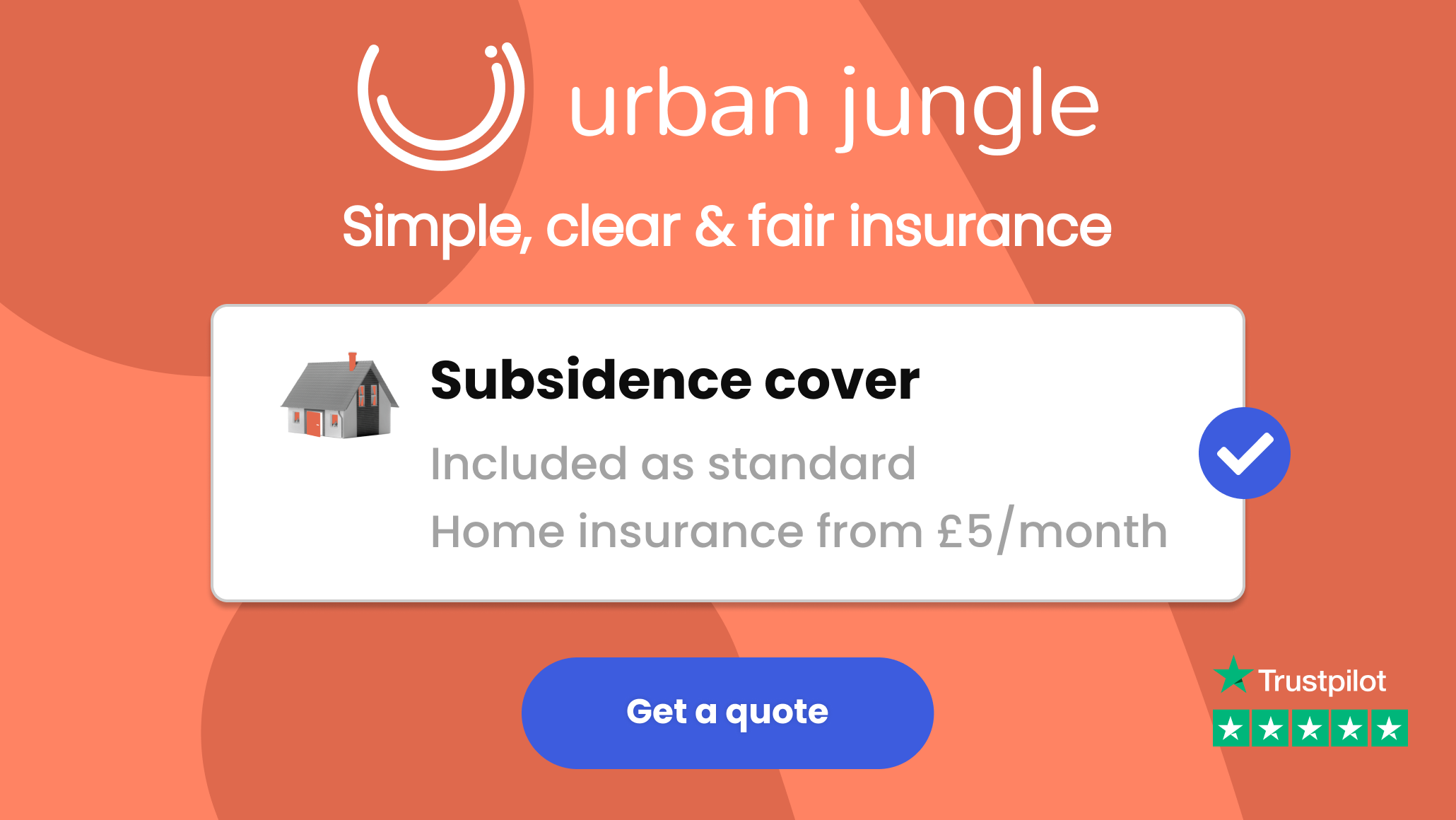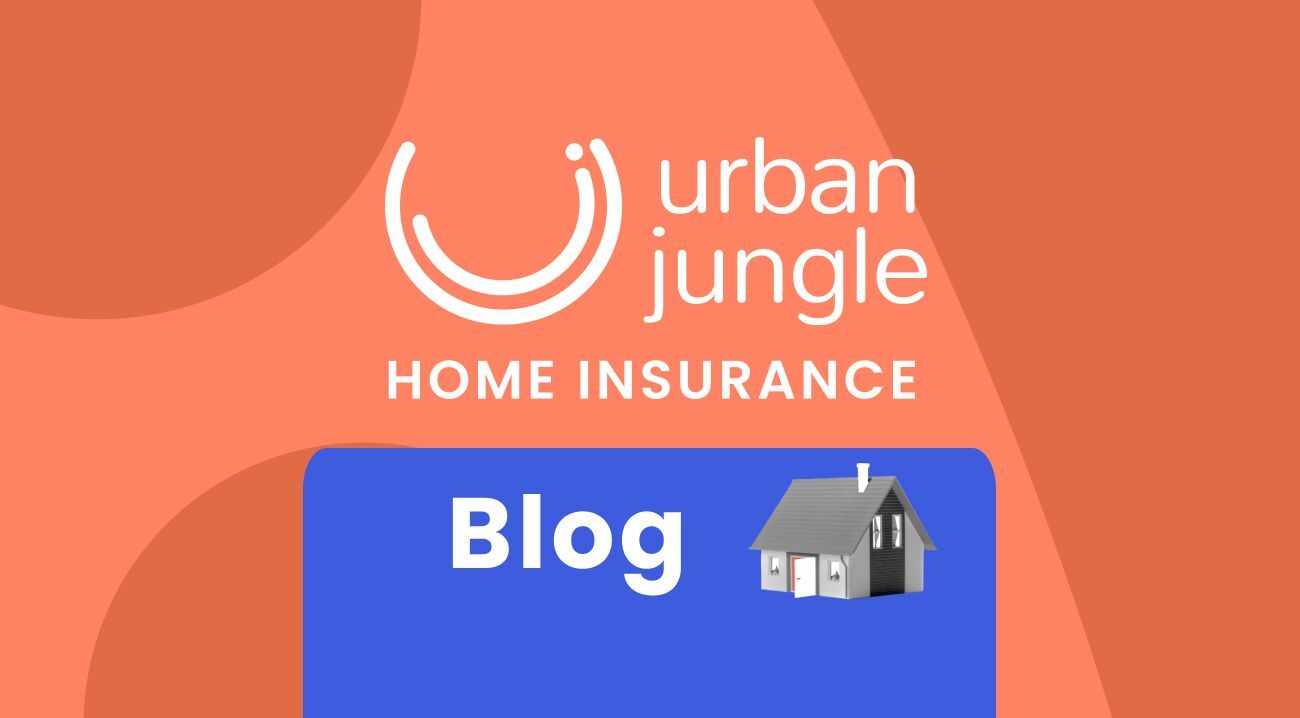Subsidence and Home Insurance

Subsidence and Home Insurance
Subsidence, like many of the circumstances you can insure your home against, is a situation you hope you’ll never have to deal with - but that’s what insurance is for, a bit of peace of mind. So if your home’s foundations crack and the ground really does start sinking beneath your home, you should have some help rebuilding from your insurance provider.
What’s the definition of subsidence?
Subsidence is the result of the ground falling out from underneath your home, which is probably more common than you think - as many as 1 in 50 homes in London and the South East have to deal with it. This can cause cracks in the foundation and up through the walls of your home. If severe enough, it can actually cause your home to lean to one side or another and become structurally unsound.
Along with subsidence, other types of ground shifts that Home Insurance usually covers are:
- Heave: when the land underneath your home pushes up
- Landslip: when the land under or around your home slips downward because it’s sloped - often suddenly and unexpectedly
Does Home Insurance cover subsidence? Does Building Insurance cover subsidence?
Yes, you should be covered by most insurers for subsidence if you have Buildings Insurance (which is a type of Home Insurance) assuming the home hasn’t experienced subsidence before. Most insurance providers, including Urban Jungle, require your home to have no known subsidence history before they’ll insure it because subsidence can need such extensive repair. It’s often - quite literally - rebuilding the foundations of your home, which when you sit down and think about what that kind of process would take, of course, it’s a big task.
To somewhat compensate for this risk, some insurers will require a higher subsidence excess within their standard Home Insurance policy for subsidence claims.
If you’re in the process of buying a home or thinking about it, this is one to look out for. If you think a home has a history of foundation issues caused by subsidence, strongly consider getting it confirmed either directly by the estate agents or by getting a building survey before purchasing - or both.
If it’s confirmed, you’ll want to get documentation of the repairs so you can provide evidence to the (likely specialist) Home Insurance provider that the subsidence has been properly addressed to get the home insured. As Building Insurance is typically mandatory, it’s best not to go into a home purchase blind if there’s a subsidence history because it may cost you more to insure.
Typically, subsidence cover within standard Home Insurance excludes things like:
- Damage that occurs during ongoing structural work (repair, alterations or extensions)
- Damage due to coastal or riverbank erosion
- Damage due to bedding down, settling, expanding or shrinking
- Damage to certain types of floors unless the walls are damaged at the same time by the same event
- Damage due to faulty design or poor workmanship
- Damage to things that are typically outside, for example swimming pools, hot tubs, tennis courts, drives, patios, gates and fences
How can I tell if my home has subsidence issues?
Cracks in your walls aren’t necessarily a sign of subsidence, particularly if you bought a new build - often your house ‘bedding down’ or ‘settling’ in the first years following the building being complete can cause some small cracks as well. This type of damage typically wouldn’t be covered by insurance providers under a subsidence claim.
Typically cracks from subsidence are:
- Diagonal
- Wider at the top than the bottom
- Thicker than a 10p coin
- Often around doors or windows
Other signs of subsidence are: doors and windows not closing fully or sticking, and wallpaper crinkling when it meets another wall or the ceiling. Of course, this could also just be poor wallpaper DIY at some point in the history of the home, so take care to not leap to expensive conclusions without a decent chunk of evidence supporting it!
 (https://www.myurbanjungle.com/quote/address)
(https://www.myurbanjungle.com/quote/address)
What causes subsidence?
While subsidence can happen anywhere, some of the more common causes include:
- Trees: Root systems can get under the foundation (especially if it’s shallow) and cause the ground underneath to shift. More commonly than that, trees close to your home can sometimes cause changes in the moisture content in the soil underneath your home as they absorb water and grow, which can shift the ground underneath. To help, the ABI has a list of recommendations of how near or far certain tree species should be from your home.
- Clay: Clay can be particularly sensitive to the weather, contracting with dryness and heat, which can lead to instability. Clay is a more common ground in southern England than elsewhere in the country.
- Mining: If there are old mines beneath your home, this can be an issue because the material used to fill the mine can decompose and shift, causing subsidence. Note that if your subsidence is caused by a coal mine, this is typically dealt with through the Coal Authority rather than with your Home Insurance provider.
- Leaks: If you have a persistent problem in your home with leaky pipes, drains, mains, flooding or otherwise, that can soften the ground beneath your home and cause a shift.
How long do you have to declare subsidence?
Well, if you have subsidence at your home, you’d want to get it managed as soon as possible to limit and fix the damage.
If you’re switching insurance providers, whether your new or previous insurer addresses the claim is decided by the ABI’s claim handling agreement. It’d also be a good idea to share any potential subsidence to your new insurance company, regardless of whether or not you need to make a claim at the beginning of your policy. If you do want to make a claim after switching:
- If the claim is within 8 weeks of switching to a new insurance company, your previous insurer will handle the claim
- If it’s between 8 weeks and 1 year, your previous and current insurer will jointly manage the claim
- If it’s after 1 year, your current provider will take on your claim
What about subsidence excess Home Insurance?
As mentioned earlier, some insurers might charge a higher excess for subsidence claims on Home Insurance because of the higher associated costs for repair.
While subsidence can be a hard concept to wrap your head around when you’re looking at homes to buy, it’s an important one to consider because homes with a subsidence history can be much harder to insure. Knowing that your Home Insurance should cover your home if subsidence issues occur, you’ll hopefully be able to rest a bit easier when you move into a new house.
Urban Jungle is not a financial advisor and information in this article should not be taken as advice or recommendation.





